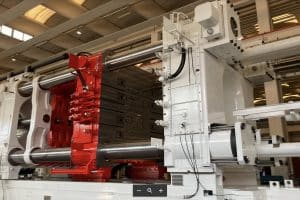- 🚗 Electric vehicle startup Canoo has delivered the first three Oklahoma-built Lifestyle Delivery Vehicles (LDVs) to the state.
- 💰 The state purchased the LDVs at a total of $119,850, or $39,950 per vehicle.
- 🏭 The LDVs were produced at Canoo’s new Oklahoma City factory using battery modules built at a facility located in Pryor.
- 🌱 Oklahoma aims to modernize its vehicle fleet, with the LDVs contributing to environmental goals and potential savings on maintenance.
- 🌐 Canoo’s partnership with Oklahoma involves a larger agreement that could include the delivery of up to 1,000 vehicles.
- 🤝 Canoo has also delivered vehicles to the U.S. Army and secured a contract with NASA, in addition to fleet orders from various companies.
- 📈 The LDVs represent the first commercial vehicles produced in Oklahoma since a General Motors (GM) plant closed in 2006.
The electric vehicle (EV) landscape is witnessing a paradigm shift with Canoo’s recent milestone in delivering the first batch of Oklahoma-built Lifestyle Delivery Vehicles (LDVs). This development not only marks a significant stride for Canoo but also holds promising implications for Oklahoma’s automotive industry and environmental sustainability efforts.
The Canoo Impact
Canoo, an innovative EV startup, has successfully delivered the initial three LDVs to the state of Oklahoma. Pioneering a new era of electric mobility, these vehicles represent a blend of cutting-edge technology and environmental consciousness.
1. Financial Facet
- The state invested $119,850 for the three LDVs, amounting to $39,950 per vehicle. This substantial investment signifies the confidence placed in Canoo’s electric fleet.
2. Production Prowess
- Manufactured at Canoo’s recently established Oklahoma City factory, the LDVs are a testament to the company’s commitment to local production. The battery modules, crucial components of these vehicles, are crafted at a specialized facility in Pryor.
3. Environmental Initiatives
- Oklahoma’s decision to embrace Canoo’s LDVs aligns with its larger goal of modernizing the state’s vehicle fleet. By integrating electric vehicles, the state anticipates not only a reduction in carbon footprint but also considerable savings on maintenance costs.
4. Strategic Partnership
- The collaboration between Canoo and Oklahoma extends beyond this initial delivery. A broader agreement is in the works, hinting at the potential deployment of up to 1,000 vehicles. This strategic partnership underlines the state’s confidence in Canoo’s vision and capabilities.
Beyond Oklahoma: Canoo’s Global Impact
Canoo’s influence extends far beyond the Sooner State. The company has made substantial strides in diverse sectors, indicating a robust global presence.
1. Government Contracts
- Canoo has expanded its footprint in the public sector, delivering vehicles to the U.S. Army and securing a contract with NASA. This diversification showcases the versatility and reliability of Canoo’s LDVs.
2. Corporate Collaborations
- In addition to government contracts, Canoo has garnered fleet orders from renowned companies, including Walmart, Zeeba, and Primetime Shuttle. This corporate adoption further cements Canoo’s position as a key player in the EV market.
A Historic Turn for Oklahoma
The delivery of Canoo’s LDVs is not just a business transaction; it symbolizes a historic moment for Oklahoma’s automotive industry.
1. End of a Dry Spell
- The LDVs mark the first commercial vehicles produced in Oklahoma since the closure of a General Motors (GM) plant in 2006. This revival injects new life into the state’s manufacturing sector, signifying a resurgence in automotive production.
2. Government Endorsement
- Governor J. Kevin Stitt expresses enthusiasm, stating, “For the first time in 17 years, vehicle manufacturing is back in Oklahoma.” This endorsement reflects not only economic optimism but also a commitment to sustainable transportation solutions.
In Conclusion
Canoo’s delivery of LDVs to Oklahoma is a watershed moment, intertwining economic growth, environmental responsibility, and technological innovation. As the electric revolution gains momentum, this collaboration sets a precedent for future developments in the EV landscape.





